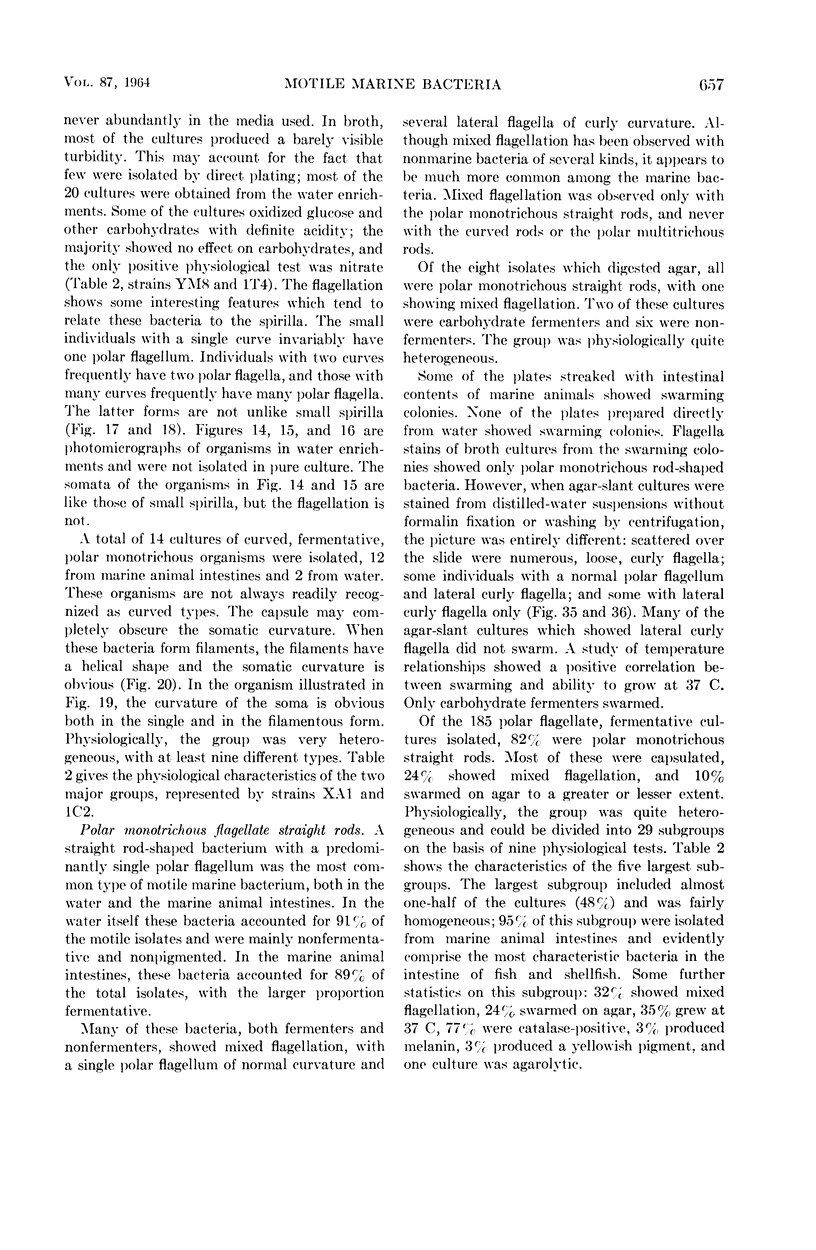Abstract
Leifson, Einar (Loyola University, Chicago, Ill.), B. J. Cosenza, R. Murchelano, and R. C. Cleverdon. Motile marine bacteria. I. Techniques, ecology, and general characteristics. J. Bacteriol. 87:652–666. 1964.—Aerobic, heterotrophic bacteria were isolated from the waters of the Long Island Sound, Narragansett Bay, Atlantic Ocean, and from the intestine of a variety of marine animals found along the shore of the Long Island Sound. A total of about 600 cultures of motile bacteria were studied morphologically and physiologically, with special emphasis on flagellar characteristics. The great majority of the bacteria isolated from the water were polar flagellate, nonfermentative, nonpigmented, and gramnegative. Most of these were straight, capsulated rods, but a considerable number were curved like vibrios. Yellow-pigmented isolates were often nonmotile, and the motile forms were most frequently subpolar flagellate. Several rosette-forming bacteria, including Caulobacter species, were isolated. Two typical spirilla and one flagellated coccus were found. Peritrichous flagellate bacteria, both gram-positive and gram-negative, were rare except in bottom mud. The normal intestinal flora of marine animals, such as fish and shellfish, consisted of polar flagellate, fermentative, non-pigmented, gram-negative, straight rods. Curved forms, like vibrios, were less common. Polar multitrichous flagellate forms were not uncommon and included all the luminescent types isolated. A considerable proportion of the polar monotrichous flagellate rods swarmed over the surface of agar media. When grown on solid media, all of these showed mixed polar and lateral flagellation; in liquid media, mainly polar flagellation was found. The ecology and general taxonomy of marine bacteria are discussed.
Full text
PDF














Images in this article
Selected References
These references are in PubMed. This may not be the complete list of references from this article.
- LEIFSON E. DETERMINATION OF CARBOHYDRATE METABOLISM OF MARINE BACTERIA. J Bacteriol. 1963 May;85:1183–1184. doi: 10.1128/jb.85.5.1183-1184.1963. [DOI] [PMC free article] [PubMed] [Google Scholar]






